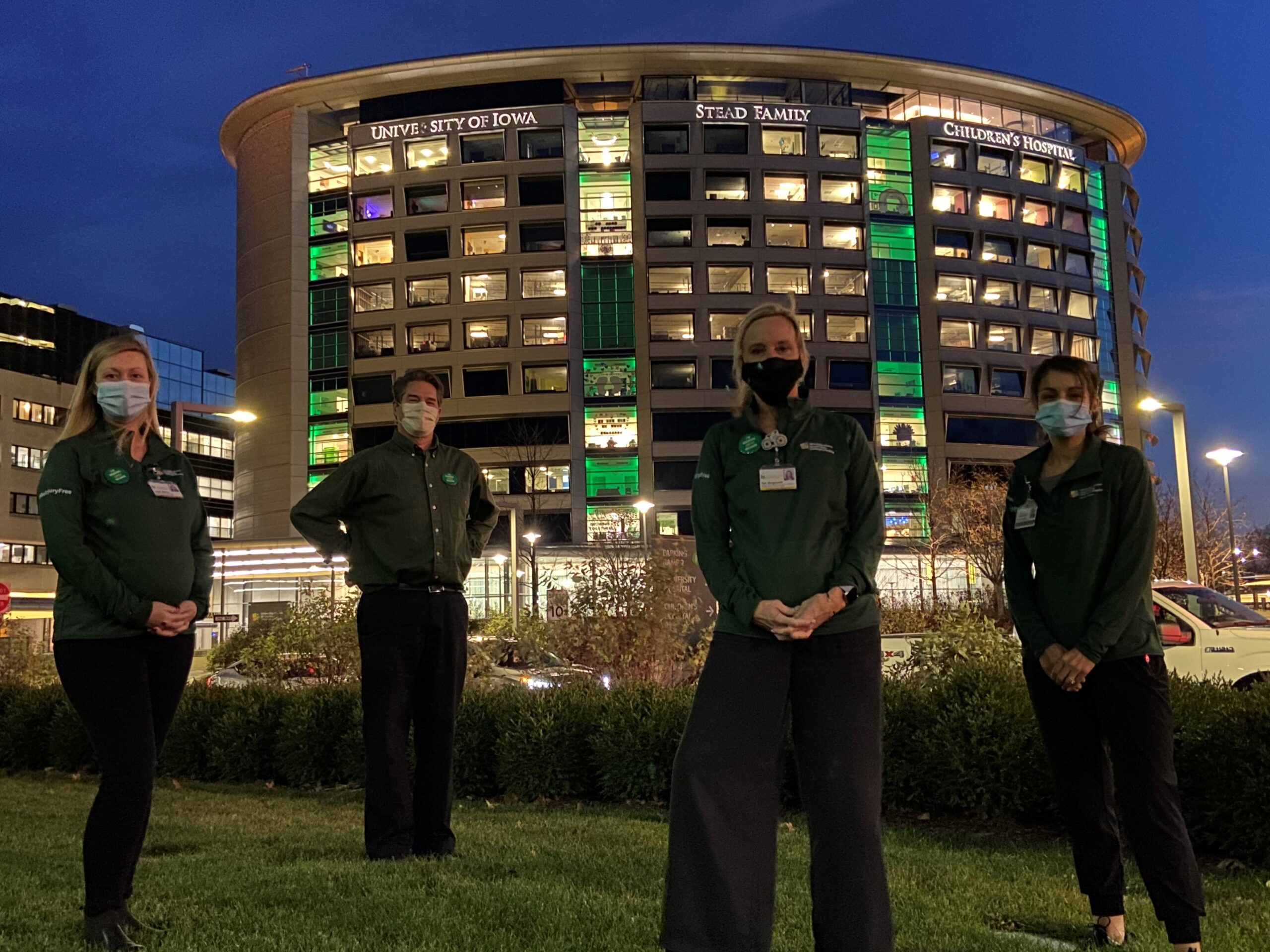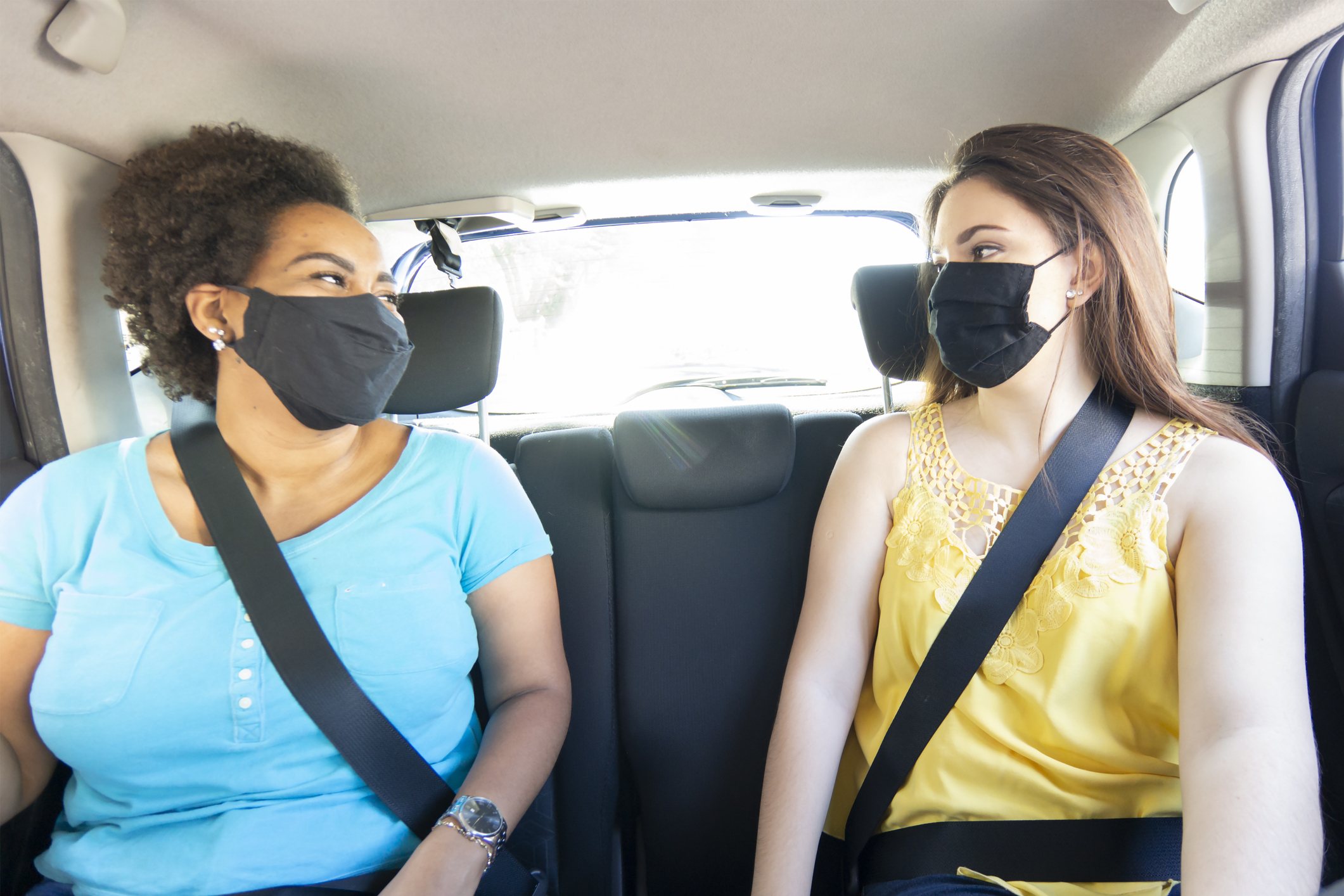Nov. 18 – Around the country trauma hospitals, buildings and bridges will light up green as advocates in injury and violence prevention mark the second annual National Injury Prevention Day. This day of action, led by the Injury-Free Coalition for Kids, raises awareness that injuries are serious but preventable and change is needed to reduce this public health issue.
The highest-level trauma centers are in urban centers across the U.S., so some children with traumatic injuries living in rural areas aren’t close by to get the care they need or are injured far from help. Injury risks in rural areas include geographical isolation, high-risk farm activities, and gravel roads or two-lane roads with no shoulders. In rural America, death rates are higher from motor vehicle crashes, burns, drownings, and suicide compared to urban areas.
According to the Centers for Disease Control and Prevention (CDC), injury is the leading cause of death for children and adults aged 1-44.
Pam Hoogerwerf directs the injury prevention program at UI Stead Family Children’s Hospital in Iowa City, one of nearly 50 Injury-Free Coalition for Kids sites in the U.S. She said many parents and caregivers she talks to are surprised to hear unintentional injuries are the number one cause of death and disability in children.
“Whether I am presenting to an audience or just having individual conversations, it’s something that people honestly don’t know,” she said. “So bringing attention to injury prevention to the public and spreading a bigger message in Iowa and beyond is important.”

Iowa is one of the states issuing proclamations declaring November 18th National Injury Prevention Day, and Iowa City, Coralville and Waterloo are among the U.S. cities doing so. Sites lighting up green in Iowa November 18 include the UI Stead family Children’s Hospital, the UI College of Public Health, Iowa City’s Park Road bridge by Hancher Auditorium, the stage on the Pedestrian Mall downtown, and the public works building. The city of Coralville will light green the roundabout outside the Xtream Arena entrance.
Hoogerwerf’s team is collaborating with Johnson County Public Health and the Child Care Resources and Referral of Northeast Iowa to distribute pack-and-plays and baby swaddles to underserved and high-risk families along with materials in several languages to promote the importance of a safe sleep environment.
In addition, Hoogerwerf’s team will be passing out green buttons for hospital doctors, nurses and other staff to wear, sharing prevention messages on social media, and offering free gun locks through the hospital’s Safety Store to staff to promote safer storage of firearms.
She said they are also partnering with a Future Farmers of America youth group to promote injury prevention messages and advocacy in schools.
“We are very excited about being about to engage our youth in this endeavor this year,” she said.
Child injury prevention research & resources
DROWNING
In rural areas, child drowning more frequently occurs in open bodies of water that are part of the rural landscape, such as lakes, ponds and irrigation canals.
Drowning is the leading cause of death for children ages 1 to 4 years and the second leading cause of injury death in children ages 5 to 9 years old. Learning how to swim and proper supervision are crucial. Drowning can happen quickly and silently, and children can drown even though they are surrounded by people.
Open Water Safety Checklist from Safe Kids Worldwide

FARM INJURIES
Farms have many safety hazards for both young children and adolescents including machinery and animals. Every year more than 100 children are killed on farms and 12,000 are seriously injured.
Agricultural work is one of the most dangerous occupations in the U.S., and children of all ages can be present on the worksite. As many as 60% of agriculture-related injuries happen to children who are not working, and many work-related injuries are due to children doing work that is not appropriate for their developmental level.
Find resources to create safe play on the farm.
Read about the top 5 strategies to keep kids safe on the farm.
FIREARM INJURIES
A 2018 study published in the New England Journal of Medicine found that firearm-related injuries were the second leading cause of death for children and teens (1-19 years of age) in the U.S.
A recent study by UI Hospital & Clinic researchers surveyed over 1,300 rural youth in Iowa about the presence and storage of firearms in their homes. Researchers found the vast majority had firearms in their homes and a large proportion of these firearms were not stored safely. Of youth with rifles/shotguns in their homes, over half (51%) reported these firearms were stored unlocked.
If a firearm is in the house, it should be kept unloaded, locked, and out of reach and sight of children. Ammunitions and guns should also be locked in separate locations, not together. Read here about safer storage of guns.
Read here about preventing youth suicide
Family guide to home firearm safety during COVID-19

FIREWORK INJURIES
Fireworks can cause serious burns and ignite fires. A new study by the UI Hospitals and Clinics found that fireworks-related injuries more than doubled in the two years after the sale of fireworks were legalized in Iowa in May 2017 compared to the three years prior to legalization. The study found injuries were more severe, with more amputations – mainly fingers.
Researchers also found a number of fireworks-related injuries among Iowa patients under the age of 18 nearly tripled after the legalization of fireworks.
It is best to leave fireworks to the professionals and attend a public display. Legal fireworks should only be used away from people, houses, and flammable material, and should never be used while impaired with drugs or alcohol.
Read about fireworks safety from the National Safety Council.
ATV INJURIES
Over 200 ATV crashes occur each year in Iowa. Hoogerwerf said while ATVs can be enjoyable and useful, they can become dangerous very quickly.
“Families tend to buy one machine as a one-size-fits all and that is one of the more important dangers,” she said. “As you move up in engine size, it adds significant speed and weight, which is very concerning when a child is too small to be on it.”
ATVs are not designed for use on public roads although some Iowa counties allow this. UI research has shown riding ATVs on paved and unpaved public roadways is more dangerous than riding off-road.
UI researchers recently examined off-road vehicles crashes involving operators less than 16 years old in Iowa from 2002- 2017. They found that only 24% of operators and 14% of passengers involved in crashes wore helmets and 82% of crashes occurred in rural areas. See our visual abstract.
CHILD PASSENGER SAFETY
According to new results of the annual child passenger safety study conducted by the UI IPRC, Iowan teens are less likely to wear seat belts compared to younger children, and rural children in the state are less likely to be properly restrained in a vehicle compared to urban children. Deaths from motor vehicle crashes are higher in rural areas compared to urban ones.
Read here for child passenger restraint safety tips.

LAWN MOWER INJURIES
Each year around 8,500 children 18 years old and younger are treated in emergency departments for lawn mower-related injuries. In younger children injuries occur when they try to touch the lawn mower while someone is mowing or before the mower has cooled down after use.
Children can be run over by ride-on mowers, causing life-threatening injuries. This happened to 3-year-old Tate when his father backed up his lawn mower without seeing or hearing his son who had arrived home with his family.
Young Tate survived and now his family advocates for lawn mower safety. He will be accepting the city of Waterloo proclamation declaring November 18 Injury Prevention Day on behalf of injury prevention partners.
Children should always be kept inside while mowing and never ride as a passenger on a lawn mower. Read here for lawnmower safety tips.
FALLS
Falls are a leading cause of child injuries at home, but can happen anywhere.
UI researchers studied unintentional injuries in children due to falls using data from the Iowa Trauma Registry from 2010 – 2014. The new study found that patterns of fall injuries presenting to trauma hospitals differed by age.
Head injuries were the most common type of injury in children younger than 1 years of age (77%), while fractures were the main type of injury in all other age groups, followed by head injuries. Children younger than 1 years old and those 15-18 years old had more severe falls-related injuries than those 10-14 years old.
Subscribe to the monthly blog of the UI Injury Prevention Research Center.
Published November 18, 2021